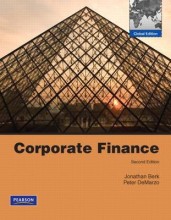Storey: six steps toe heaven
13 important questions on Storey: six steps toe heaven
Storey's paper seeks to
evaluate the impact of public policies to assist the SE sector. It identifies 6 approaches, from most simple to most complicated: six steps to heaven
Paradox of job creation
- When its succesfulcan, it can lead to lower rates of out migration, because people feel secure of getting a job
- this can lead to an increasement of unemployment
Step 2: recipients opinions
Firms who participate in schemes are asked for their opinions.
- did participants like it?
- Where there problems applying? Like, where procedures slow?
Problems
- even if they like it, it doesn't tell if its effective
- all it can do is offer insights into policy delivery, but thats not the key question
- Higher grades + faster learning
- Never study anything twice
- 100% sure, 100% understanding
Step 3: recipients view of the difference made by assistance
Not only asked if they liked the assistance, also whether they thought this made any difference into the performance of their firm.
- did firms think it provided additionaly?
- would firms have it done anyway?
- does it cause displacement?
Problems
- provide answers they think you want to hear
- no way of checking
- only snapshot of surviving firms
Overall, monitoring allone is incapable of offering relevant insights, because
- it cannot be estimated simply by seeking the views of firms, even if they are honoust
- to overcome these problems: necessary to compare assisted firms with groups of not assisted firms: this is what evaluation does.
Step 5: comparison with match firms
Includes matching: researchers identify a specific control group wich they can compare with assisted firms.
- compare assisted with match firms, on basis of age, sector, ownership, geography etc
- compare performance of both groups over same time period
Problems
- perfect matching on four criteria can be difficult
- sample selection bias: more motivated firms apply, and attribute differential performance
Step 6: compare assisted with match firms, taking account of sample selection
Here there could be a problem of self-selection.
- use of statistical techniques
- use of random panels
Problems
- policy makers feel uneasy about statistical adjustment (procedures are very complicated)
- using random panels means public money is given to firms who will not benefit
Because assisted firms might not be typical for economy as a whole, its necessary to:
Consider the factors which influence performance from assisted AND not assisted. This process is called matching. And leads to step 5.
Storey calls for proper evaluation of impact on public policies, because there's a lack of:
- clear definitions
- clear objectives
- clear targets
- coordinates
Problem in governmental policies
they use tax money for 'economic objectives', but are really a mechanism for persuading a certain group (in this case SE), which does not lead to increase in net economic, tax payers sees nothing
SE are more likely to employ individuals who are over representented amongst unemployed (unskilled youngsters, and very old), but job creation in SE has modest effect upon reducing registered unemployment. Because
- SE are likely to provide part time work
- which is likely to be registered as employed
Storey makes a difference in monitoring and evaluation
- Steps 1-3 are monitoring: it relies exclusively upon the views of the recipients of the policy
- Steps 4-6 are evaluation: attempts to determine the impact of the policy initiatives.
Step 4: comparison of the performances of assisted with typical firms
Compare firms who are assisted by policy, with those who are not. Any difference can be attritibuted to impact of policy.
- employment/sales growth of assisted firms compared with typical
Problems
- survival of assisted firms compard with typical firms
- assisted firms are not typical. SO FIRMS WITH ASSISTANCE MAY NOT BE TYPICAL OF FIRMS IN ECONOMY AS A WHOLE. MAY BE SECTORIAL/GEOGRAPHICAL FOR EX.
The question on the page originate from the summary of the following study material:
- A unique study and practice tool
- Never study anything twice again
- Get the grades you hope for
- 100% sure, 100% understanding
Remember faster, study better. Scientifically proven.






























